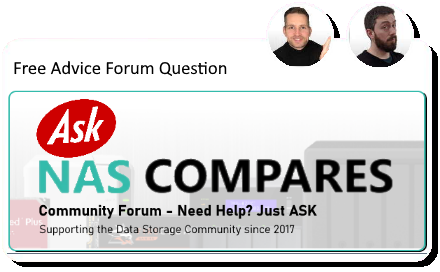08-18-2025, 12:35 PM
Hi,
I am a photographer and we are a team of 5. My requirement is i want to build a Nas with a used workstation pc like the hp z800 where i want to keep my event photos and videos so that my media team can access them for editing from both windows and Mac.i am planning for 20TB of storage. Max of 5 will be accessing the storage. Can u please suggest me the best NAS software and filesystem and raid configuration which suits my requirements and also suggest me wether i should use smb or iscsi for editing. My main priority is data safety,performance. I also considered synology but it will be costlier and i dont need the wonderful software packages and features that it offers as i use the nas to access data in my local network only.
Thanking you.
Sitaram G
I am a photographer and we are a team of 5. My requirement is i want to build a Nas with a used workstation pc like the hp z800 where i want to keep my event photos and videos so that my media team can access them for editing from both windows and Mac.i am planning for 20TB of storage. Max of 5 will be accessing the storage. Can u please suggest me the best NAS software and filesystem and raid configuration which suits my requirements and also suggest me wether i should use smb or iscsi for editing. My main priority is data safety,performance. I also considered synology but it will be costlier and i dont need the wonderful software packages and features that it offers as i use the nas to access data in my local network only.
Thanking you.
Sitaram G





